Is it time for another batch of photos from Pima Air & Space Museum? Let me check. Yes, my overflowing Flickr account says it is!
First up, our newest exhibit, a Supermarine Spitfire Mk XIVe recently acquired from the RAF Museum in Hendon, London.
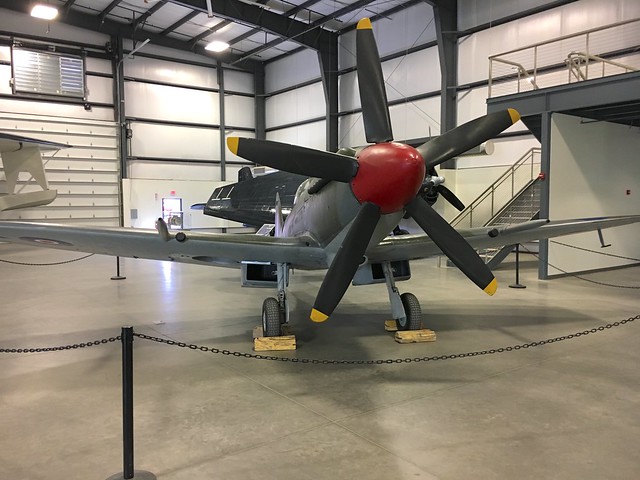
The Mk XIV is a late-WWII model of the original Spitfire, fitted with a Rolls Royce Griffon engine and five-bladed prop. The Mk XIVe is a photoreconnaissance variant with large camera “portholes” behind the cockpit. Its wings are clipped to improve performance at low altitude. Some additional photos:
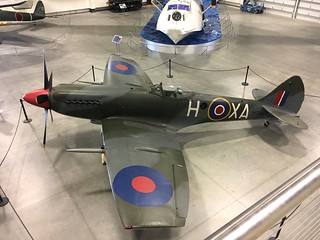 |
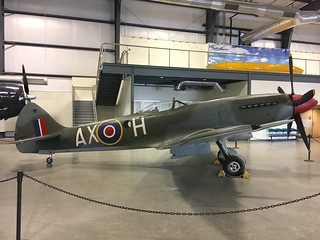 |
The Spitfire arrived just two weeks ago and was taken straight out of its shipping crate and reassembled. Up close it’s a bit rough, and I’m told it’ll be taken off the floor for new paint once other projects are moved out of the restoration hanger.
Visible behind the Spit in one of the photos above is our Consolidated PBY-5A Canso, a Canadian version of the Catalina. Restoration staff recently completed building a water diorama beneath and behind the Canso to show it in its natural environment.
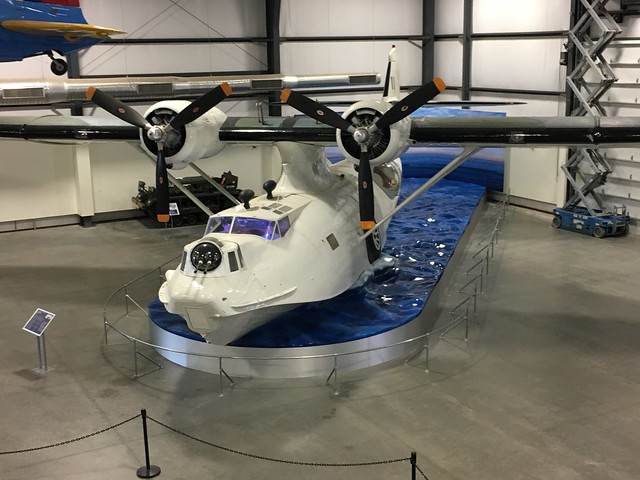
Some time back the museum acquired a Douglas A-24B Banshee, the Army Air Force version of the Navy SBD Dauntless dive bomber. Our Banshee came without wings, but for the last two years restoration has been busy fabricating new ones from factory blueprints. Here’s our Banshee, and I must say it looks ready to fly:

One of the museum’s longer-term restoration projects is an IL-2 Shturmovik. This one was fished out of a swamp near Stalingrad, and only the metal parts had survived. In an earlier photoblog I posted photos of IL-2 parts stored in a corner of the main restoration hangar. The engine, for as long as I can remember, has been on display in one of the WWII hangars. Restoration is fabricating new wood wings and a rear fuselage, and soon the old and new parts will come together. I can’t say when the Shturmovik will be done, but it’s great to see it coming back to life.
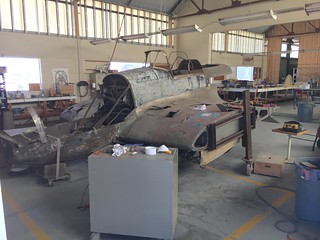 |
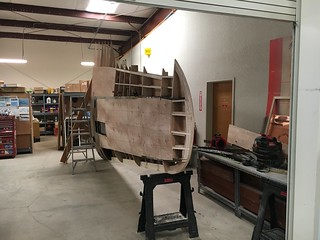 |
I’ll finish with an interesting angle on one of our Vietnam veterans, recently returned from restoration with new paint. Let’s hear it for extra-long selfie sticks!
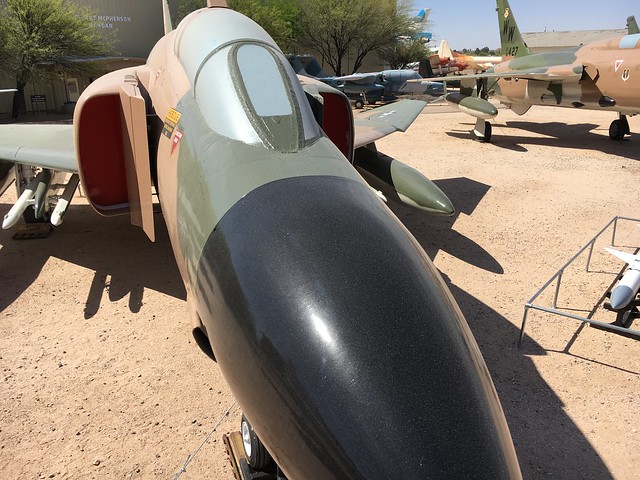
Excellent photos. Good to see you still have access to the restoration area(s) & can share what you see there. Seems Pima could make a dollar or two from periodic enthisiast oriented behind-the-scenes small group walking tours. New England Air Museum used to do that. Maybe still does, but a much smaller scale operation.
But I’m stuck in “old school”. Volunteered @ Pima as a mere “yoot” 76-82. I enjoyed working with some great friends there who have sadly passed on. WHOLE different ballgame now. Big business now, a major attraction. Someone might trip or get a boo-boo on their finger & sue the place. Old model of the place where a bunch of old guys could enjoy messing around with equally old planes are long-gone, like a LOT of other things.
I retired & live in the area, still getting to the museum every month or so to see what’s new. My big plans o volunteer @ Pima are not going to happen. Now I’m just another boring old fudd with a lot of useless knowledge about airplanes that nobody really wants to hear about. Times & things change – we must also. I’m still a plane buff.
Anyhoo, I very much enjoy your Air Minded blog. Keep up the good work.
Bob, good to hear from a fellow docent. I’ve found the volunteers I work with to be much like the previous generation you describe: old fudds with lots of knowledge. True, the museum could be doing lots of things they aren’t, and I like your idea of guided restoration tours. I’ll pass it up the chain. I drive trams, and always stop by the resto yard to tell visitors what’s going on back there. Docents aren’t supposed to go inside the fence, but we tram drivers do all the time, and no one has ever challenged me. As you probably did yourself back in the day, I obey museum rules … selectively!